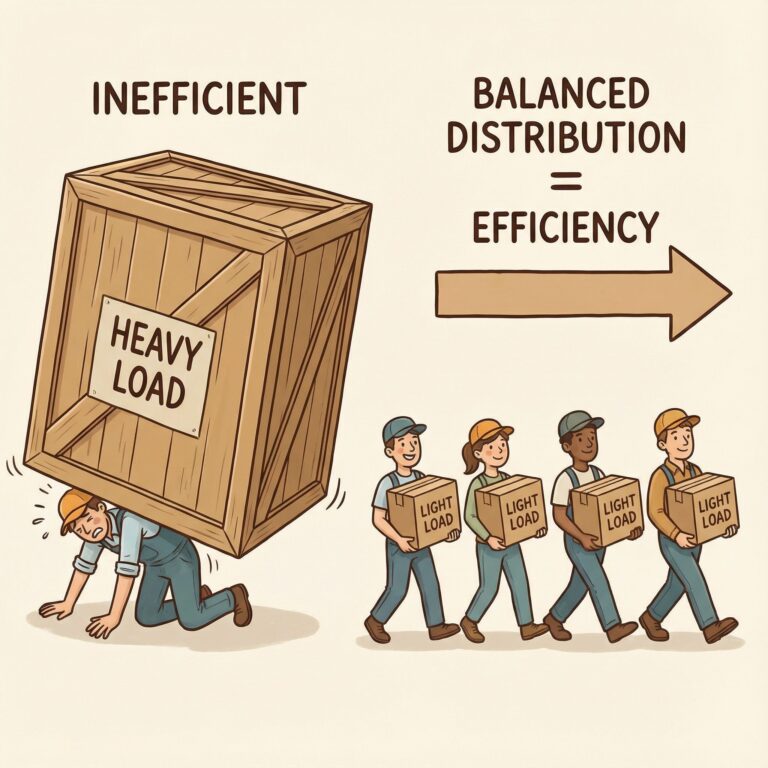The Simple Guide for New Start in Control Systems
Base of Control Theory
Control theory is the key tech field that sets rules and auto control for many systems to get set results. In its base, control systems use hard ways that keep an eye on and tune both inputs and outputs to keep wanted work levels. 온라인카지노솔루션
Main Parts and Work
Today’s control systems use two main points:
- Feedback loops that keep getting system info
- Sensors that look at real-time work numbers
- Actuators that make needed changes
Know Control System Types
Open-Loop Control Systems
Open-loop systems work without feedback ways, doing set runs no matter the end stuff. These systems are simple but can’t fix themselves.
Closed-Loop Control Systems
Closed-loop systems show high tech control, with features:
- Always watching work
- Real-time wrong catch
- Auto fix ways
- Quick answers to system changes
Uses and Effects
Rules of control systems run many today’s tools:
- Work auto
- Heat set systems
- Bot control systems
- Work control tools
- Auto making
These basic thoughts are the core of today’s system rules and auto tech, letting for full control in many uses from simple warm set to big work tools.
What is Control Theory
Know Control Theory: A Full Guide
Base of Control Theory
Control theory is a core part of tech and math based on checking and moving system acts through input-output ties. This area is the core of present auto and system care across many fields and uses.
Types of Control Systems
Open-Loop Control Systems
Open-loop control works on a set of rules without watching real ends. The system does jobs based only on first inputs, like a simple timer-run tool. While easy to make, these systems can’t make up for outside mix-ups or changes in work. Inside the World of Tipsters
Closed-Loop Control Systems
Closed-loop control shows a more deep way, using non-stop feedback ways to keep true system control. These systems use:
- Real-time watch through sensors
- Auto fix based on end numbers
- Mistake fix through comparing real vs. wanted states
- Quick answers to changing things
Uses and Putting to Use
Today’s control systems find wide uses in:
- Work auto
- Car systems (speed set, steady systems)
- Heat set
- Bot systems
- Work control
The use of control theory thoughts lets for full care of hard systems through math shapes, feedback ways, and fit control plans, making sure top work across many uses.
Types of Control Systems
Know Types of Control Systems
Basic Control System Types
Control systems can be grouped into clear types based on their work ways and feedback ways. The two main types are open-loop and closed-loop control systems, each used for set work and buyer uses.
Open-Loop Control Systems
Open-loop control systems work with solo control moves that do not count on end feedback. A known case is a heat box, which runs for a set time no matter the food’s heat. These systems offer:
- Simple build
- Cost-less way in
- Set work
- Low care needs
Closed-Loop Control Systems
Closed-loop control systems show high auto through non-stop end watch and real-time fixes. Car speed control shows this system, with three main parts:
- Sensors for end measures
- Controllers for wrong fix
- Actuators for putting in fixes
Hybrid Control Systems
Hybrid control plans mix both open and closed-loop ways for top work. Today’s making acts often use:
- Step-by-step acts using open-loop control
- Precision jobs using closed-loop feedback
- Mixed watch systems
- Fit control ways
These smart systems push for top use while keeping full control over hard work acts.
Parts of Feedback Loops
Know Feedback Loop Parts in Control Systems
Main Pieces of Feedback Control
Feedback loops are the core of today’s control systems, working through four main parts that work together to keep true control. These linked parts make a hard system for auto rules and best use.
Main Feedback Loop Parts
1. Sensor Parts
The measure sensor acts as the system’s main data get point, always watching key things like heat, push, speed, and other work things. This key part gives real-time info needed for right system control.
2. Controller Jobs
The control part works as the system’s brain, doing smart control plans to work on sensor info. It matches measured numbers against set setpoints and works out needed changes to keep top work levels.
3. Actuator Moves
Actuator systems put in the controller’s rules through real changes. These may have control valves, power motors, or change ways that right away change the work numbers. Actuators turn digital signs into moving moves that change the system’s acts.
4. Work Add-On
The work or plant stands for the system under control, answering fast to actuator fixes. This part ends the feedback loop, with its end becoming the input for the sensor’s next measure round.
Non-Stop Control Round
The feedback way works in a never-ending round of measure, check, fix, and answer. This non-stop loop makes sure true control and system easy, keeping wanted setpoints through non-stop watch and fix.
Open Vs Closed Loop Systems
Open Loop vs Closed Loop Systems: A Full Guide
Know Control System Ways
Control systems drop into two main groups: open loop and closed loop systems. These clear ways use for different aims in control tech and auto, each with its own features and uses.
Open Loop Systems Told
Open loop control systems work without end feedback, doing set moves based only on input signs. The system works on input signs and makes ends without watching the results. A known case is a simple toaster, which runs for a set time no matter the bread’s real heat or cook level.
Closed Loop Systems in Look
Closed loop control systems use hard feedback ways that keep an eye on end things. These systems auto set their work by matching real work with set outcomes. Car speed control shows this way, always looking at car speed and tuning gas level to keep the set speed.
Main Differences and Uses
Work Things
- Open Loop Systems:
- Simpler build
- Less money to put in place
- Less hard
- Less right
- Closed Loop Systems:
- Better detail
- Better hold
- Auto wrong fix
- Better system trust
Choice Points
The pick between open and closed loop plans turns on:
- Needed right levels
- Money limits
- System hard care
- Work needs
- Outside things
High Up Way Look
Tools must look hard at system needs when picking control ways. While closed loop systems give better work, their more hard and cost may not be worth it in simple uses where true control is not key.
Know System Easy
Know System Easy in Control Tools
Main Thoughts of System Easy
System easy is the key to good control tools. A well-made system must keep controlled acts under many work things while keeping wild answers away. Know the gap between easy and not easy systems is a must for tool win.
Easy Things and Look
Easy systems show set acts by getting back to their wanted state after outside mix-ups. In the other way, not easy systems show non-stop moving from setpoints, often leading to big growth in end signs. Tools use many analyzing ways to look at easy:
- Key fact look
- Pole look plans
- Routh-Hurwitz rule
- On the edge easy look
Closed-Loop System Looks
Feedback Control and Gain Care
Feedback gains play a big role in keeping system easy. Tools must tune these numbers well as too much gain can make an easy system not easy. Root place look gives key facts into pole move with gain changes, letting for sharp easy side find.
Easy Edges
Phase edge and gain edge facts serve as key easy hints, giving:
- Fact safety fill-ups
- Work trust facts
- System strong hints
High Up Stabilizing Plans
Today’s control systems use smart stabilizing ways including:
- Fix nets
- PID controllers
- Fit control systems
- State feedback looks
These acts make sure strong easy across many work things while keeping top system work.
Real-World Control Uses
Real-World Control Uses in Today’s Tools
Work Control Systems
Control Tools shape today’s work acts through smart auto and watch ways. PID controllers are the main of making systems, giving true rule of key numbers in chemical tools, auto lines, and flow care. High up control plans make sure top use and the same good across work acts.
Car and Car Systems
Car control systems show cutting edge uses of feedback control thought. Plane auto drive systems keep set fly things while tuning for air mix-ups. Today’s cars use many linked control loops managing key acts:
- Anti-lock braking systems
- Fit speed control
- Tool care systems
- Power steady control
Build Auto and Heat Control
HVAC control systems show high up use of control thought through:
- Fast heat rule
- Moisture level care
- Air good care
- Use care
Buyer Tools and Smart Tools
Sharp control systems run today’s buyer tech work. DVD players use smart light place controls for right data read, while smartphones use many control loops managing:
- Battery load care
- Fit light light
- Sign power care
- Heat care
Green Power Uses
Power control systems push for top use in green power make through:
- Wind tool pitch control
- Sun board track care
- Power change care
- Grid mix systems
Top Control Plan Notes
Top Control Plan Notes: A Full Guide
Key System Look
Control system plan starts with full look to set a strong base. Tools must see key system numbers, work limits, and key work needs. Working right math looks lets for sharp show of system acts, while full check through play says model right before use.
Fit Control Pick
Picking top control ways asks for looking at both old and today’s control ways. The pick turns on:
- System hard levels
- Needed work facts
- Outside things
- Work limits
Back-up acts and fail-safe ways are key parts for making sure system trust across many work things.
Optimization and Work Tuning
Control system optimization asks for planned way over off the cuff changes. Key ways include:
- Ziegler-Nichols tuning
- Pole place ways
- High up plan ways
- Real-time work watch
Check and Notes
System check asks for full test ways:
- Easy look
- Mix-up say no look
- Strong look
- Work check
Full notes look design facts, test results, and system thoughts, making for easy care and future changes. This planned way makes sure top control system work and long term trust.
Work Watch and Care
Real-time work watch systems make sure:
- Real-time system top use
- Early fault catch
- Predictive care skills
- Better work use
This full way to control plan makes sure strong, trust, and top system work across many work uses.

